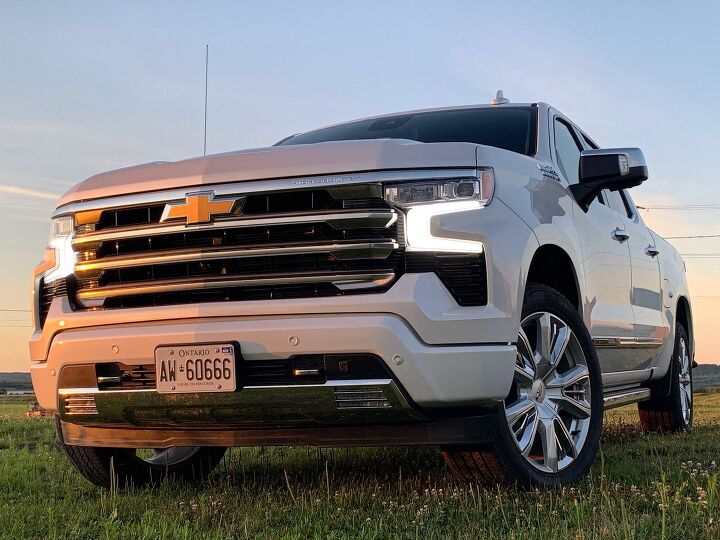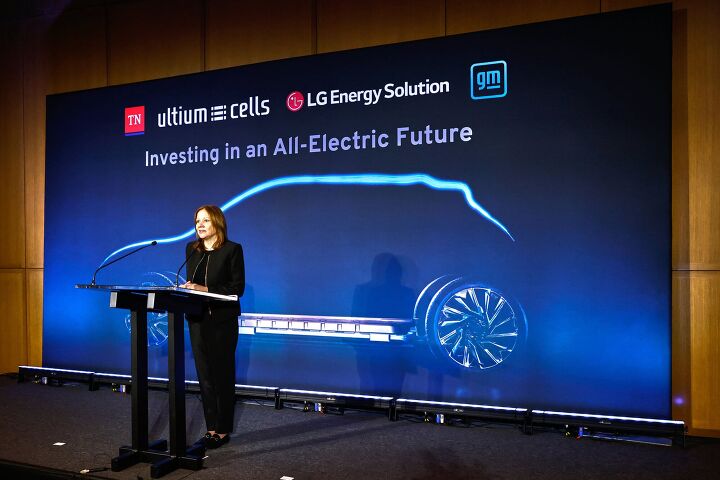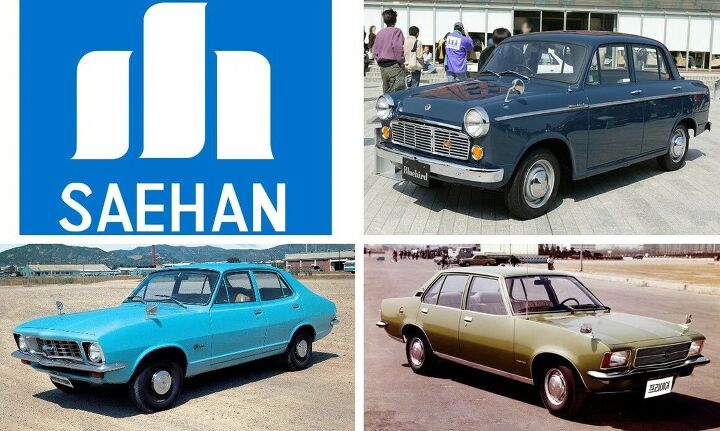#GeneralMotors
Chevrolet Corvette Production Tripped Up With Parts Shortages
The eighth-generation Chevrolet Corvette remains hard to get almost three years after its introduction, and it appears hopeful buyers may have a little longer to wait for their new sports car. Automotive News reported that General Motors is pausing production at the Bowling Green, Kentucky facility that builds the Corvette due to a temporary parts shortage.
GM Bonuses for Salaried Employees Down, Most Still Far Exceed Those for Hourly
We posted earlier about the fact that many hourly employees at General Motors could enjoy five-figure bonuses this year, thanks in part to tweaks in the UAW agreement and a banner year for profits. Now, word has leaked about bonuses for the salaried. They may be down from last year – but many remain far higher than the ones paid to hourly employees.
GM Earns Nearly $10B, Cuts Big Checks for the Hourly
Flying in the face of empty dealership lots and a headache-inducing supply chain, General Motors reported this morning that the company recorded just under $10 billion in net income during the 2022 calendar year. This is good news for anyone wearing a GM hat, including hourly workers who will find enormous bonus checks in their mailboxes later this year.
GM Exploring Small Ultium-Based Electric Pickup
Despite what automakers and your fragile ego tell you, owning the largest full-size pickup you can find does not make you cooler or more interesting. However, it does make you more likely to be frustrated while parking and waiting in line at your third fuel stop of the week. Ford and Hyundai offer small-truck solutions with the Maverick and Santa Cruz, respectively, and now it’s General Motors’ turn.
GM and Ford Partner With Google to Promote 'Virtual Power Plants'
General Motors and Ford Motor Company have joined forces with Google – and a collection of businesses focused on solar power – to advance “virtual power plants” (VPPs). If you’re unfamiliar with the concept, it basically entails leveraging distributed energy networks to create a more flexible and efficient power grid. Though the entire concept hinges on networking countless devices together via collective energy rationing whenever demand spikes.
Mary Barra Named to Top 5 of Forbes’ Most Powerful Women List
This annual list prepared by Forbes magazine, called The World's 100 Most Powerful Women, has placed a CEO from the automotive sphere squarely near the top of their rankings – right behind VP Kamala Harris but well ahead of newsmakers like Oprah Winfrey.
U.S. Preps $2.5 Billion for GM Electric Vehicle Battery Venture With LG
With the United States having successfully passed the Inflation Reduction Act over the summer, the financial floodgates have been opened for battery suppliers. Despite often being framed as a massive infrastructure package that would also help tamp down U.S. inflation, the bill also included numerous items from the Biden administration’s climate agenda setting aside billions for industries vowing to go green. This includes the joint venture between General Motors and LG Energy Solution – which will receive $2.5 billion in loans to build three new lithium-ion battery factories.
Almost 1,000 Dealers Have Signed Up for GM's Community Charging Program
Electric vehicles offer longer-range estimates and faster charging times than ever, but none of that matters if there’s nowhere to charge in the first place. General Motors hopes to improve the charging situation – at least at its dealers – in the next few years, with tens of thousands of Level 2 chargers.
GM Unveils Envista SUV for China and Teases U.S Introduction
Some have questioned why General Motors keeps Buick around since it seems like it’s not the most popular brand on America’s roads. What that view fails to consider, however, is that Buick is one of GM’s strongest brands in China, and earlier this month, the company’s president confirmed a new crossover would be coming for the country.
General Motors Opens Regional Centers, Expects to Save $2,000 Per Car
We know the switch to electric vehicles is changing our relationship with cars – charging, range, et al – but it seems the EV Era may also alter other aspects of the industry for legacy automakers. Suits at The General are suggesting a switch to regional fulfillment centers for inventory will save the company about $2,000 per vehicle.
And, as you’d expect, the plan involves shifting GM’s interaction with its dealers.
GM Electric Car Lineup Will Be Profitable in 2025, Says CEO
General Motors has an important investors meeting coming up this week and the keystone item will be explaining how profitable its planned shift toward electric vehicles will eventually be. Details of GM's presentation have leaked and, if the claims are true, leadership should be spending a substantial portion of November 17th explaining exactly how EVs will become money-makers for the business by 2025.
UAW Vying to Represent GM Battery Plant Employees
On Monday, the United Auto Workers (UAW) announced that it is seeking to represent workers employed by the Ohio-based joint venture between General Motors and LG Energy. The union said that it had filed a petition on behalf of 900 people building Ultium battery cells, saying that a majority of the plant’s workforce had already signed cards indicating that they wanted UAW representation.
Abandoned History: Daewoo Motors, GM's Passport to International Sales (Part IV)
We return to Abandoned History’s coverage of the twists and turns of the Daewoo story, at a time when the company’s predecessor, Shinjin, was no more. After an early Seventies joint venture with General Motors saw the company renamed to General Motors Korea, Shinjin bowed out of the deal after just five years. In 1976 Shinjin’s ownership in the business was sold to a state-owned Korean bank, and General Motors Korea was renamed to Saehan Motor Company. But that didn’t mean GM was out of the picture - far from it.
Honda Shares Images and Details for the 2024 Prologue EV
Honda has dabbled in EVs, but its first mass-market model doesn’t go on sale in the U.S. until 2024. The Prologue will be the inaugural Honda EV for our market, and today, the automaker shared details and images of the new SUV.
Abandoned History: Daewoo Motors, GM's Passport to International Sales (Part III)
After a few successful years building a trio of Toyota models (Corona, Publica, and Crown), Shinjin was forced to look elsewhere for a business partner. Toyota wanted to sell cars in China, and China forbade any company that sold products on its shores from having operations in South Korea. As expected, the government stepped in and assisted in a new deal between Toyota, Shinjin, and General Motors.
The deal was finalized in 1972 and saw Toyota sell its stake in Shinjin directly to GM. The 50-50 GM-Shinjin venture saw the latter immediately renamed to General Motors Korea. GMK was immediately the new face of GM product distribution in South Korea. Let’s embark upon a series of particular business arrangements involving Shinjin that didn’t last very long.






























Recent Comments